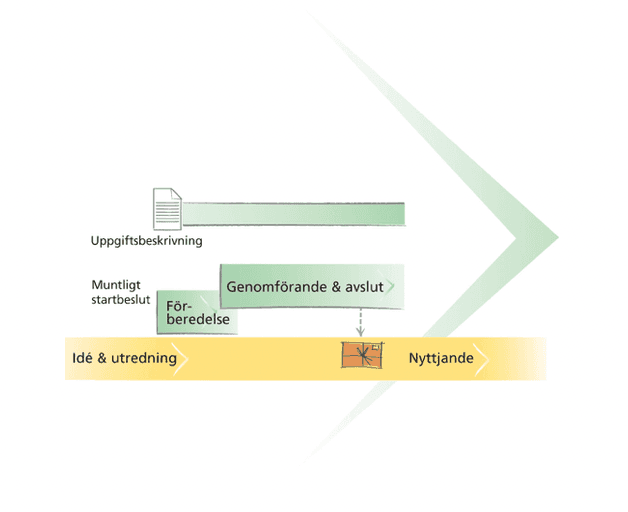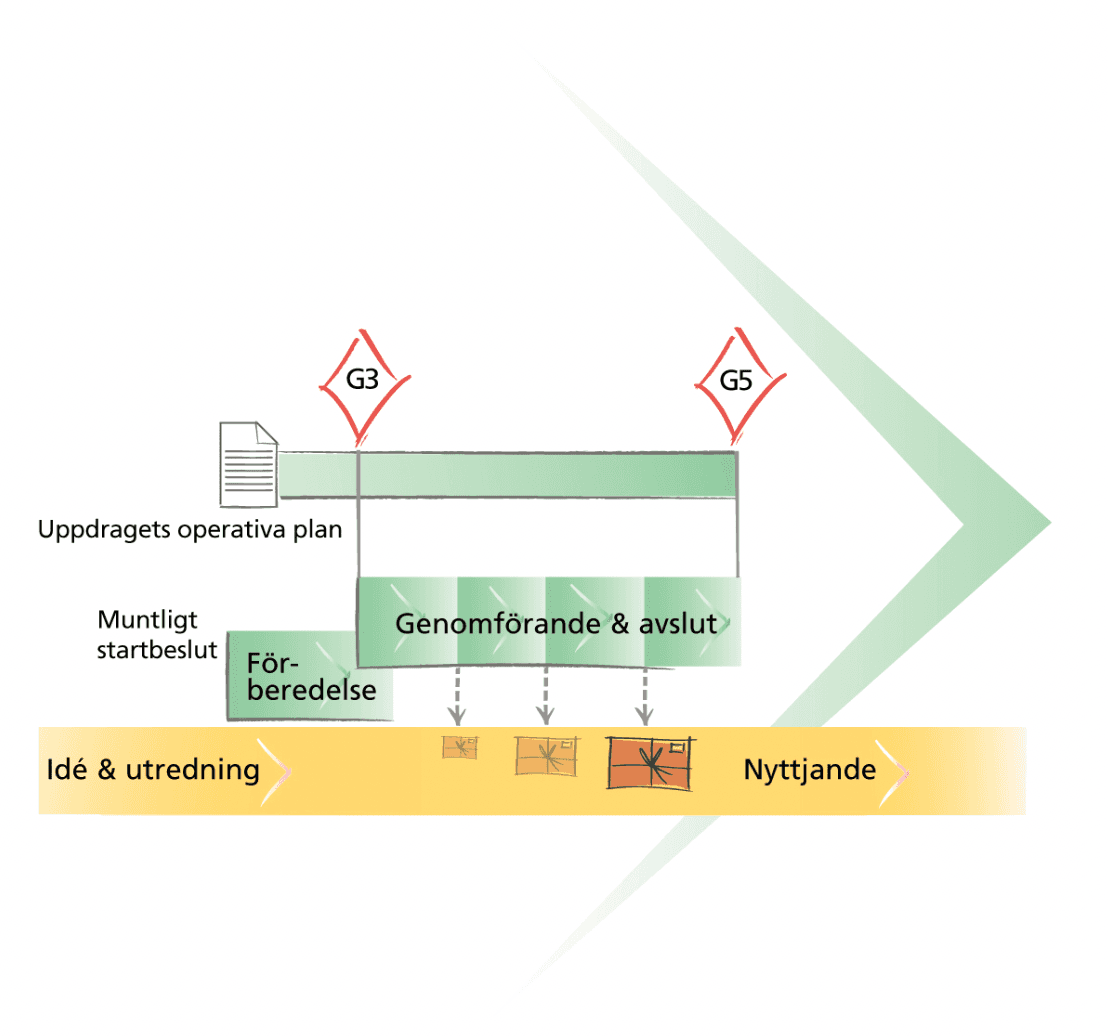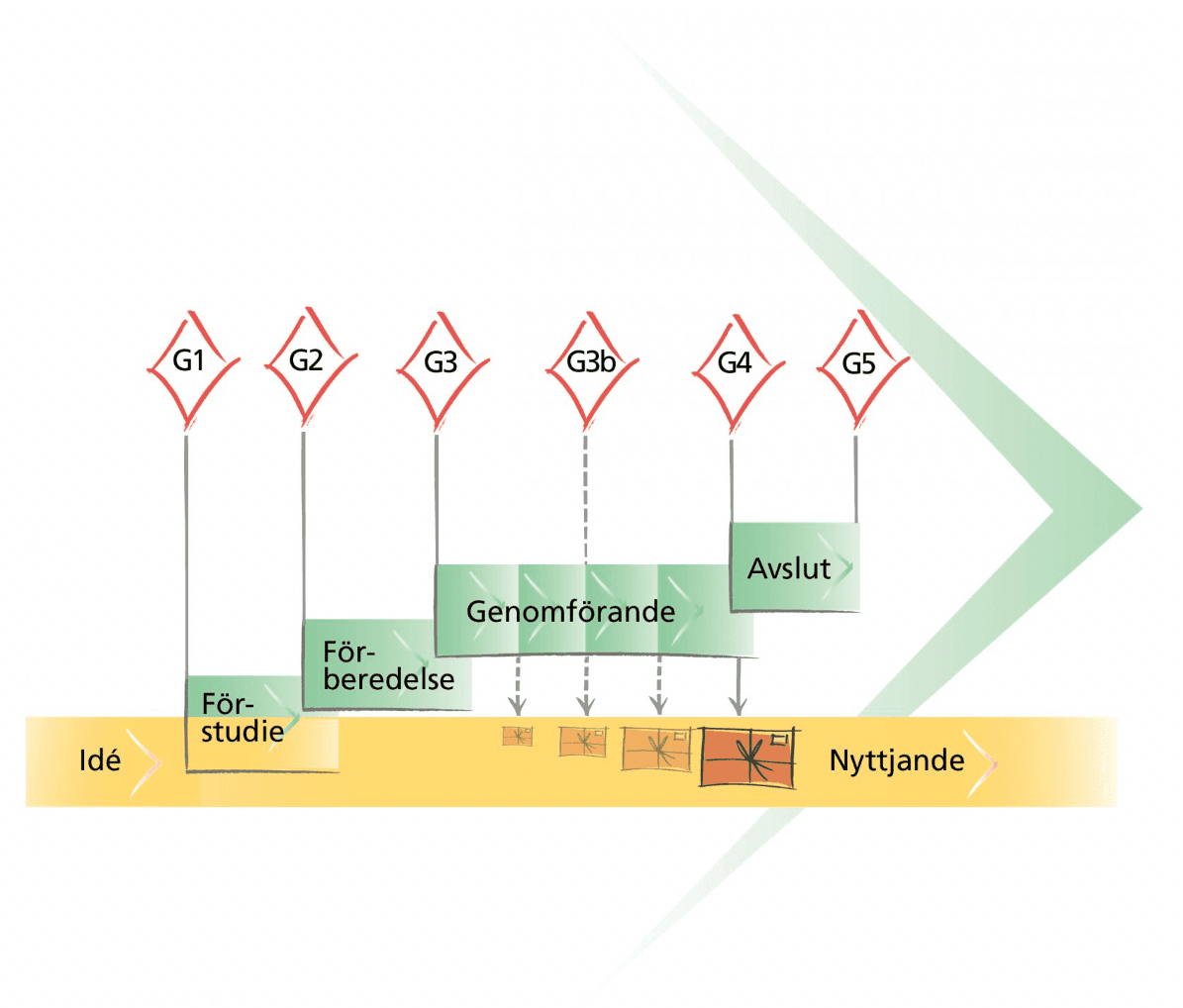Vår projektmodell
Vi kan hjälpa er att införa projekmodeller
Kontakta mig via formuläret eller ring mig på 076-136 64 56 för ett kostnadsfritt möte.

Birgitta | Utbildningsrådgivare
076-136 64 56
birgitta.andreasen@wenell.se
Kontakta mig via formuläret eller ring mig på 076-136 64 56 för ett kostnadsfritt möte.

Birgitta | Utbildningsrådgivare
076-136 64 56
birgitta.andreasen@wenell.se
Vi delar in olika arbeten av engångskaraktär i tre olika kategorier: projekt, uppdrag och uppgifter.
Syftet är att få till en bra balans mellan styrning/formalia och enkelhet.
Arbeten av engångskaraktär kan vara målstyrda eller målsökande. Varje organisation behöver hitta sina kriterier som styr kategoriseringen. Exempel på kriterier för kategorisering. Större satsningar kan genomföras som stora projekt med delprojekt eller som program. Projektportfölj är ett sätt för organisationer styra sin projektverksamhet.
Till stöd för olika typer av arbete finns i Wenells projektmodell tre varianter anpassade efter de skiftande behoven. Arbetsmönstret är snarlikt och det är samma verktyg/metoder som kan användas för alla tre kategorierna.

Uppgifter är enkla arbeten av ringa omfattning med låg osäkerhet och litet samordningsbehov. Behovsbilden är tydlig och det finns inget behov av omprövning under uppgiftens gång. Arbetssättet inspireras av projektformen men är mer informellt jämfört med uppdrag eller projekt.
Många uppgifter utförs av en enskild person.

Uppdrag är arbeten av medelstor omfattning med lägre osäkerhet och samordningsbehov än projekt. Behovsbilden är tydlig och det finns ett begränsat behov av omprövning under uppdragets gång.

Projekt är arbeten av stor omfattning med hög osäkerhet och stort samordningsbehov. Behovsbilden behöver genomlysas och förtydligas. Arbetet behöver omprövas under projektets gång.